A relatively short stretch of the Platte river in central Nebraska near Kearney and Grand Island is known for a unique natural phenomenon that happens every spring: migration of the sandhill cranes. They arrive from their wintering locations, such as Mexico, Texas, and New Mexico, and stop in Nebraska to rest and refuel before continuing their journey further north to Canada, Alaska, and even Siberia. More than 80 percent of the entire world’s population of sandhill cranes come through this major migration route, bringing anywhere from 600000 to 800000 birds during the period of approximately 6-8 weeks every year!
This past spring, we finally got to see this magnificient event. The early challenge was, of course, the gamble of timing: although I read that the migration takes place between late February and mid-April, how can I be sure to see a lot of birds? Add to this an unpredictable Midwestern spring (okay, what season is predictable in Midwest?). Finally, the decision was made: we are going in the very end of March, for the last weekend of the month. Little did I know at that time about how weird the winter will be, how long into what we usually like to call spring it will extend, and what impact the historical flooding will have on the area. All in all, the idea was to go early enough to see migration close to its peak, but late enough to not freeze ourselves spending hours outdoors.
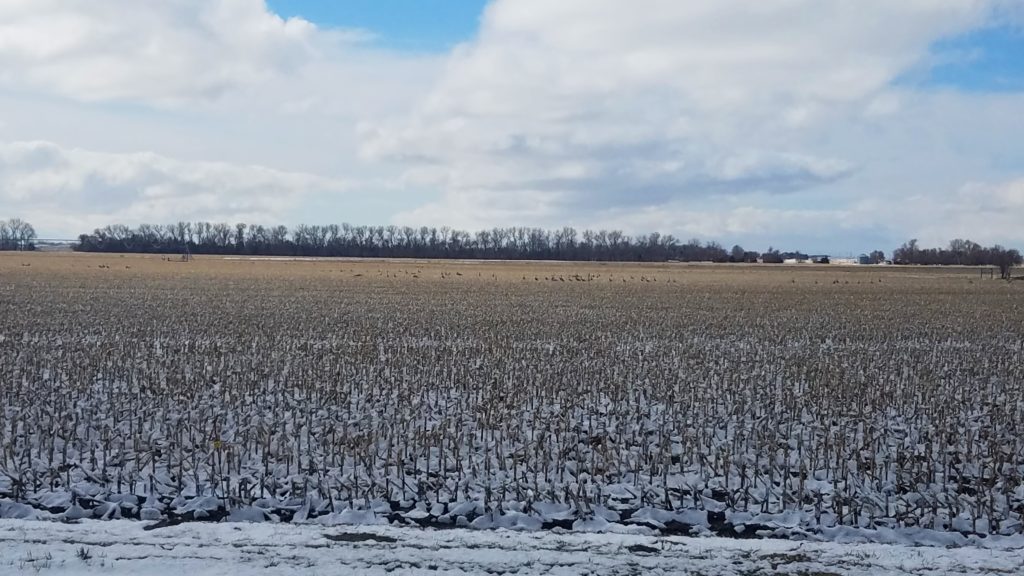
We hit the road on a windy Friday afternoon, and arrived to Kearney shortly before sunset. Upon our approach, we saw a whole bunch of birds through the sunroof of my car, and the question was: are these the cranes we came for? We did not learn to recognize a very characteristic noise that they make – but soon we could tell with confidence that they sure were sandhill cranes.
Pretty soon the fine drizzle that welcomed us at our destination turned into steady cold rain, and after dinner we retreated to our hotel rooms. I have to say that this was the first time in my life that I saw a note “No vacancy” on the doors of Motel 6!
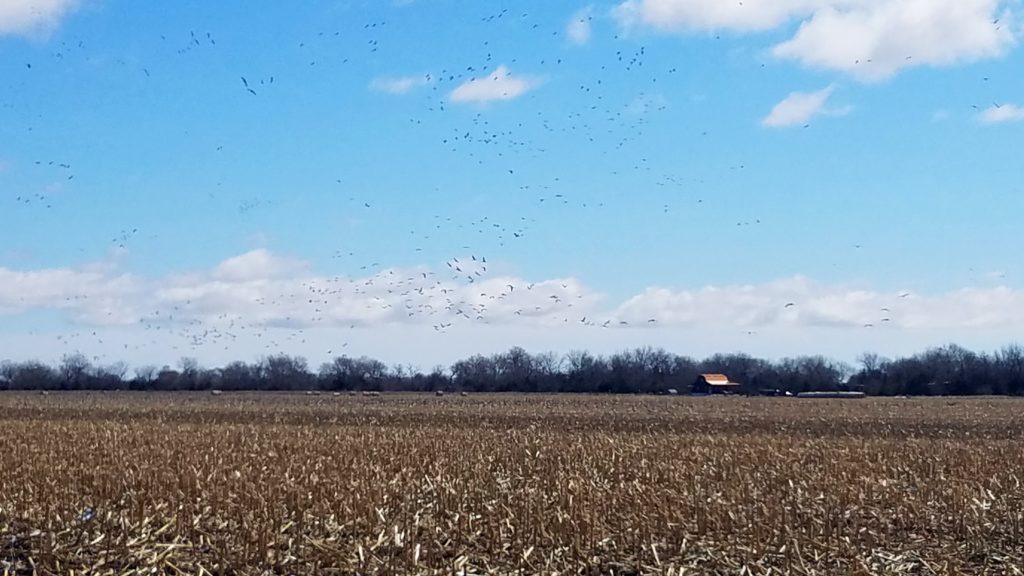
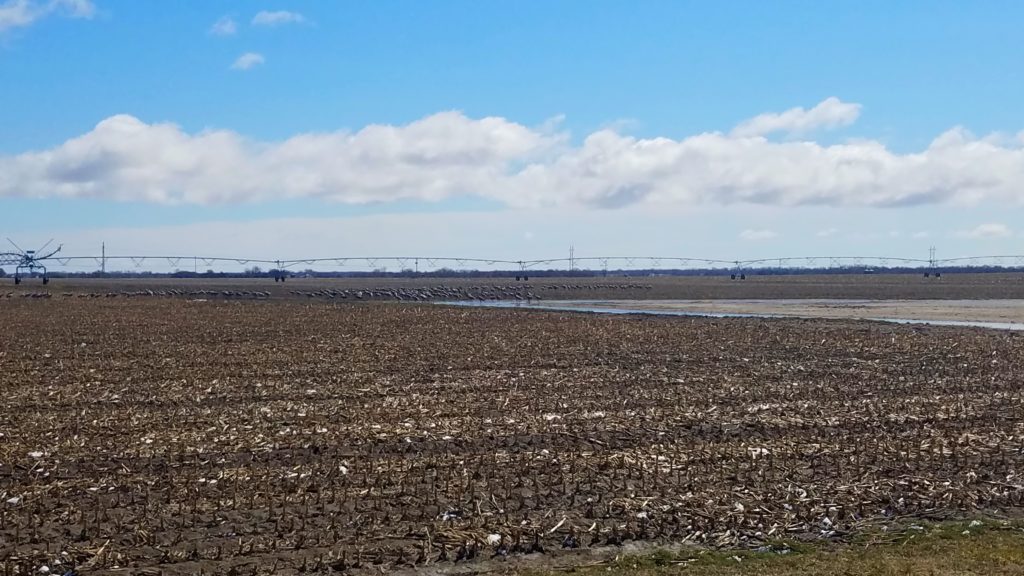
The main action of the crane migration happens at sunrise, when the birds take off from the river, where they spend the night, and fly to nearby fields to have a feast, and then at sunset, when they return back to the river for the night. We slept in the first morning and missed the show – however, we did so on purpose as we wanted to get some rest before venturing our for both sunset and sunrise experience Saturday night and Sunday morning.
However, it is still possible to see the cranes during the day. After stopping at the local visitor center and getting some information about the best viewing points for tonight and tomorrow, we spent a good portion of the day roaming around and observing the birds feeding. Besides having some rest during their long flight, partying on the Heartland’s fields rich in corn left from the previous harvest is one of the main reasons for the cranes to stop here: on average, each bird spends approximately 1-2 weeks on this natural “all inclusive resort”, and gains about 10% of its body weight.
It’s hard to point out a specific spot that would be the best for daytime viewing – however, I’d recommend visiting the Fort Kearny State Historical Park if you have some time. They have a nice video about the migration playing at the visitor center, and you can get some useful information from the local guides. Plus, there are some fields around, so you may have a chance to see the cranes there too.

For our sunset experience, we decided to go to a public viewing platform located on the Platte river at the Road 10C bridge (aka Lowell Rd). Parking is somewhat limited there, so you need to come early or be ready to park along the dirt road (Elm Island Rd). First night we did not really know what to expect, thus we showed up about 1.5-2 hours before sunrise. Well – now we know, and we are here to tell you: you don’t have to come that early, except for a nice parking spot. We stayed there for what felt like a lifetime, freezing in the wind, with no single crane in sight.
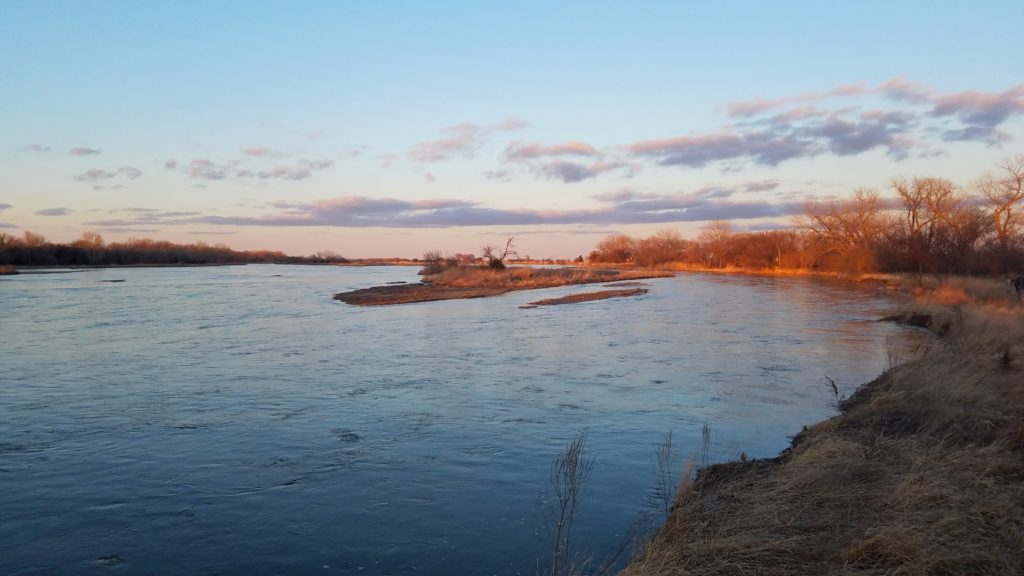
The real show begins just about 10-15 minutes before sunset, when hundreds and thousands of birds converge from all surrounding fields and fly in a majestic caravan along the river, looking for their favorite spot to spend the night. Given the challenging lighting conditions, no picture can make justice for what is happening. Even video can’t convey the scale and energy of this mesmerizing procession – you’ve got to be there and experience it yourself!
Impressed by what we saw, we were excited to venture out and welcome the birds as they wake up next morning. It was still pitch dark (and freezing cold!) when we got into the car and headed to Fort Kearny State Recreation Area that has a beautiful pedestrian bridge over the Platte river – our observing spot for today. Like yesterday, we headed to the river well ahead of time, and were on location about an hour before sunrise. And like yesterday, it was way too early. However, we were rewarded with some breathtaking views of the pre-sunrise river. Thankfully, it was not windy, which made the cold easier to endure.
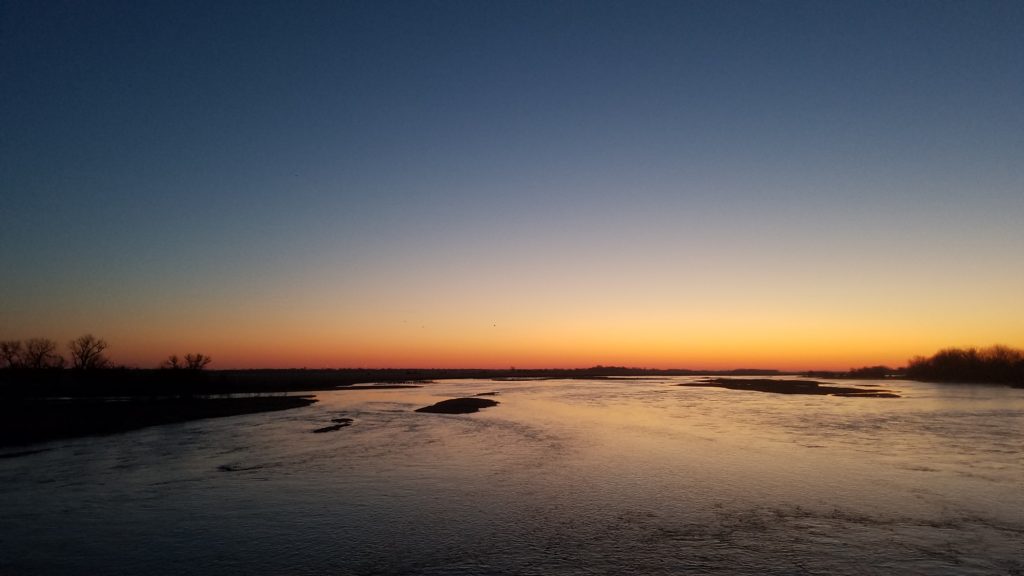
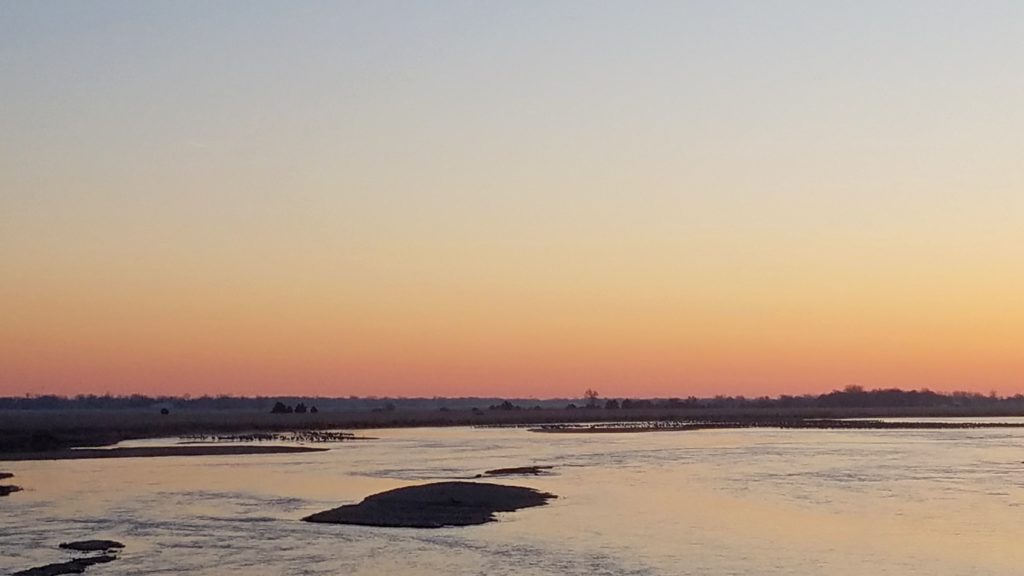
As the Sun started slowly peeking out from the horizon, the familiar sound turned louder and louder. Another interesting thing that we learned (and another misconception that we debunked) is that the cranes do not take off all at once. And it makes sense: as it was getting brighter, some of the “islands” on the river turned to be hundreds, if not thousands, of cranes! Thus, the crane Traffic Control worked hard to ensure that there are no collisions on takeoff – which would definitely be the case, had they left their night shelters all at the same time.
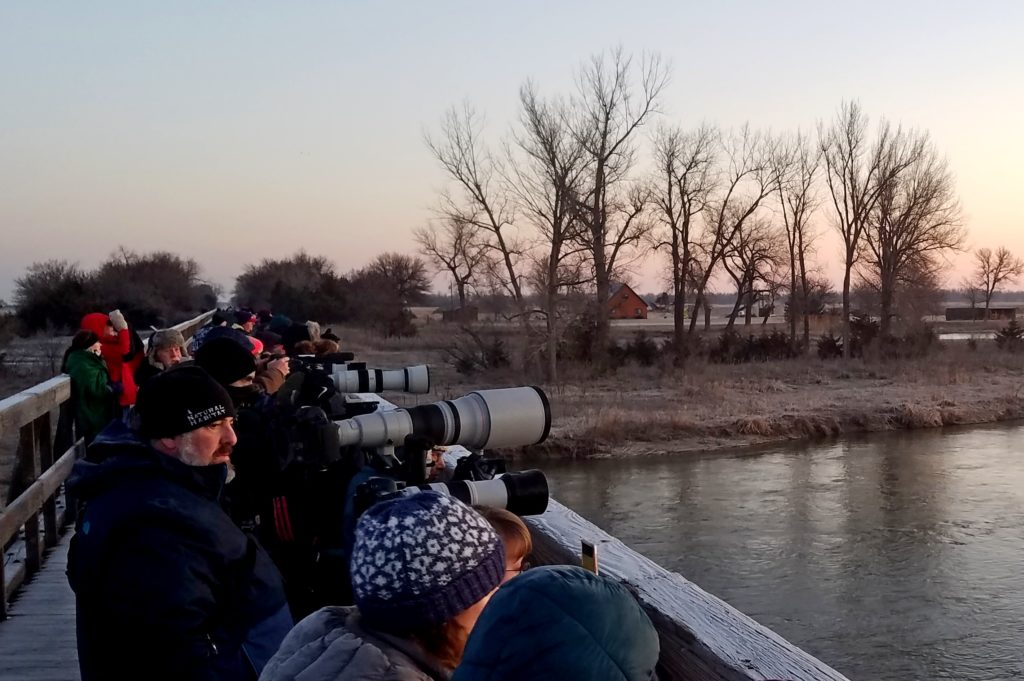
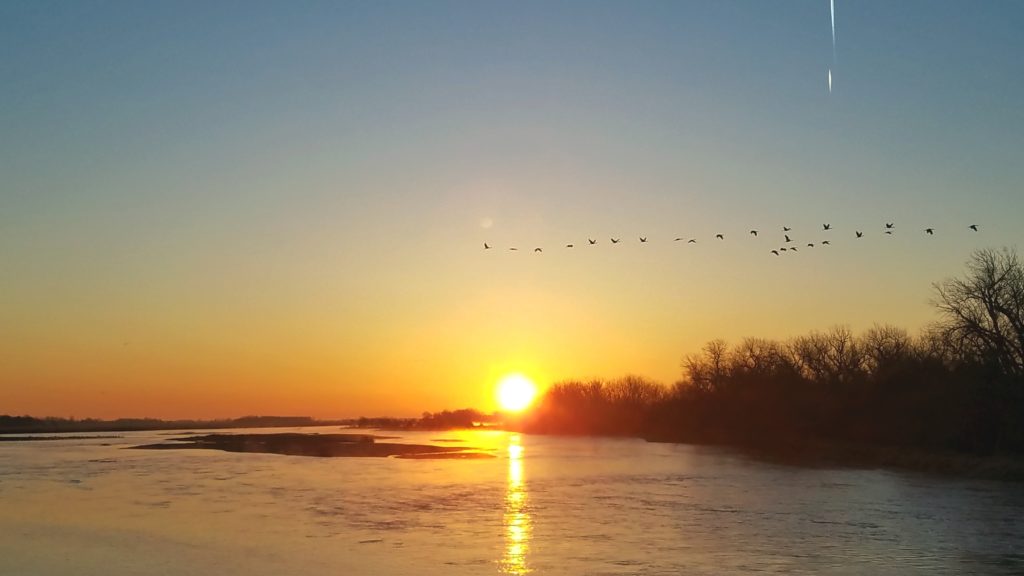
After fulfilling our mission and having breakfast, we realized that we had quite some time before the sunset. Thus, the decision was made to go explore one of the symbols of Kearney that everyone passes through driving along I-80: the Archway. Inside we found a very neatly made exhibit about the history of the Great Platte River Road and its role in building the United States westward, from the Oregon Trail times all the way to the modern Interstate 80 – one of the first routes of the US Interstate Highway System and the second longest interstate highway in the country. It is also the closest modern approximation of the historic Lincoln Highway – the first transcontinental road of the United States.

Before going back to the bridge to observe the sunset, we paid a visit to Skeeter Barnes – a great barbecue place across the I-80 from Kearney that is definitely worth visiting for dinner. Their sampler platter, aka the “Skeeter Feeder”, was so good we could not resist, and so filling that they almost had to roll us out of the restaurant. That, followed by another beautiful sunset at the river, was a great way to finish our adventure!
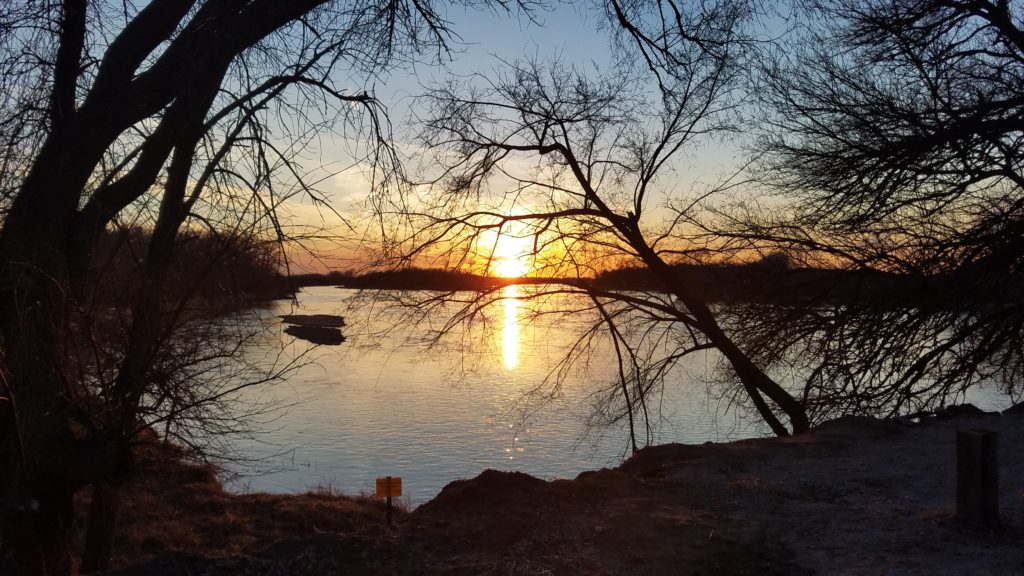
My friends and partners in crime for this trip had relatively early departures from Omaha, so we were on the road before sunrise on Monday. As much as I don’t like driving east in early morning – the views were so beautiful, and myriads of cranes were bidding us farewell.